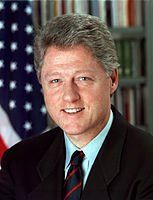Bill Clinton’s 1992 Presidential Campaign

- INTRODUCTION:
U.S. Presidential candidates rely on effective campaign strategies to form public opinion. The 1992 campaign led by Bill Clinton used an approach that was informal but creative. His victory earned him the nickname “the comeback kid”, and for good reasons too. He won the votes of not only democrats but also middle class conservatives in staunchly republican states such as Georgia. In this paper I aim to explore how Bill Clinton’s campaign organization successfully won over the middle class republican voters in rural southern states (270towin, 1992).
- LITERATURE REVIEW
Like many presidential candidates Clinton was plagued by controversy such as avoiding the Vietnam draft and accusations of infidelity. Furthermore, the Bush campaign had labeled him as a liberal – a trait disliked by conservative republicans. However, his campaign slogans were successful. “It’s the economy, stupid!” and “Putting People First” was creative and straightforward. As for the allegations of sexual misconduct he simply admitted that it was true and that it he had made mistakes. He also famously admitted to have smoked marijuana in college with the statement “I only tried it once and never actually inhaled” (Ifill, 1992). Whether or not he was being truthful there’s no doubt that his messages were effective. One of the ways that Mr. Clinton gained popularity was the use of something called priming – forming the memories of the public to see him in a favorable light, despite being embroiled in scandal.
- ANALYSIS / SYNTHESIS:
• Republicans in 1992 was against social welfare. To tackle this issue, Bill Clinton, in one of his political ads, said “welfare can be a second chance, not a way of life”. Many conservatives liked that.
• He focused on public safety (being tough criminals by supporting the death penalty) (Applebome, 1992).
• The campaign applied the resource dependency theory by saying “together we can America work again.” He applied the social exchange theory by televising his bus tour across the nation and actually talking to the voters about their problems and solutions to fix it.
• The campaign applied a two-way symmetrical model aimed to resolve conflicts.
• The campaign used the agenda-setting hypothesis that mass media doesn’t tell people what to think, but rather what to think about. For example, he appeared on the Arsenio Hall Show playing the saxophone. Audiences that watched him do this gained a more favorable opinion about him.
• The public was primed by Clinton’s use of new media. His saxophone appearance became a very memorable moment for viewers.
• Bill Clinton used creative slogans such as “It’s the economy, stupid!”. This was well received by people in rural southern states by making it seem like a grass-roots kind of campaign.
• The tactics were very successful. His method was very face-to-face and personal.
• The campaign should’ve involved more of his supporters in his political ads. His two-way symmetrical approach was too one-sided and should’ve been evened it out.
• I would also find someone who was a conservative republican middle class because he/she would be the voice for publics living in rural southern states.
- CONCLUSION
Bill Clinton ran one of the most successful U.S. presidential campaigns in history and it was largely because of his charisma and the way he used informal but creative tactics. He primed his audience and was successful at distracting them from controversial issues.
Bibliography
270towin. (1992, November). Retrieved from 270towin.com: http://www.270towin.com/1992_Election/
Applebome, P. (1992, January 25). New York Times. Retrieved from www.nytimes.com: http://www.nytimes.com/1992/01/25/us/1992-campaign-death-penalty-arkansas-execution-raises-questions-governor-s.html
Clinton, B. (1992). Presdential Power. Retrieved from Presidential Power.og: http://www.presidential-power.org/quotes-by-presidents/bill-clinton-quotes.htm
Ifill, G. (1992, March 30). New York Times. Retrieved from New York Times: http://www.nytimes.com/1992/03/30/us/the-1992-campaign-new-york-clinton-admits-experiment-with-marijuana-in-1960-s.html?pagewanted=all